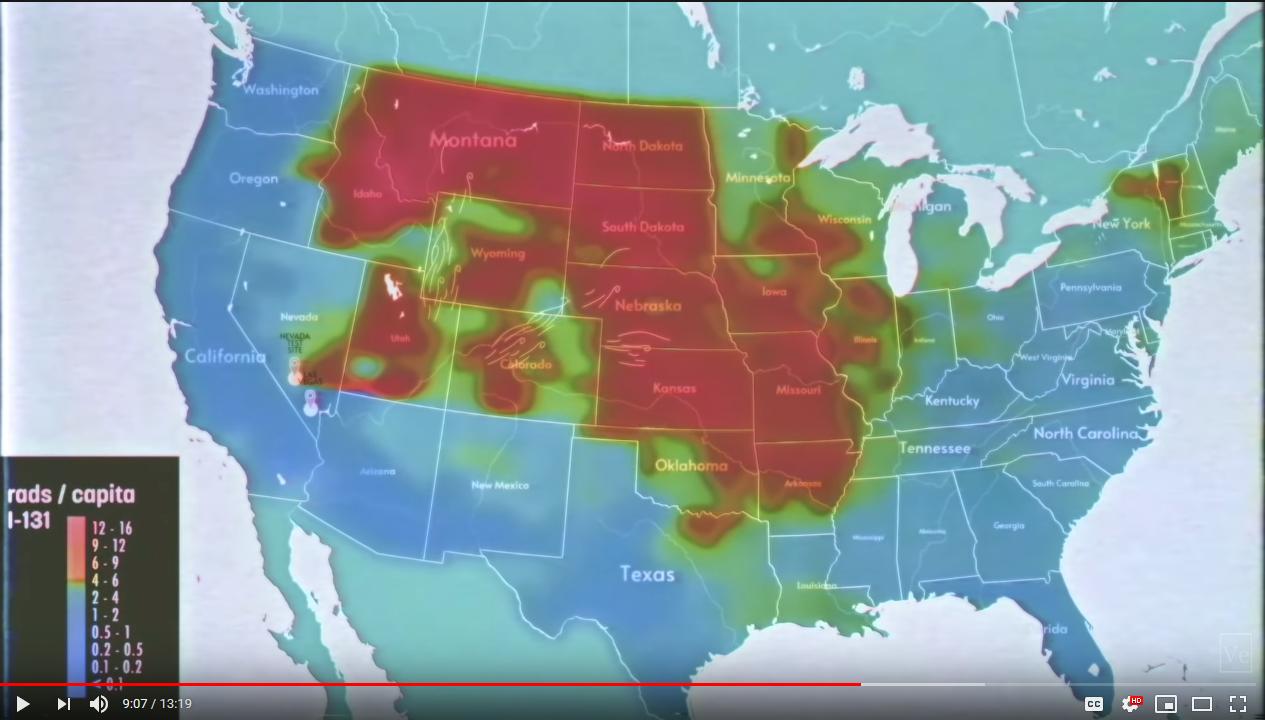This may be related to the Atlas missile silos that were located in the area.
 (Source)
(Source)
It is very possible that there was a disaster on the base that was never publicized. The Atlas silos were plagued by problems. Our government has been far from transparent when it comes to nuclear disasters. For example the large contamination plume released at Rocky Mountain Flats was not broadcast publicly for about 20 years.
The U.S. Air Force lists Plattsburgh among its BRAC "success stories."[12] The base's reuse and the circumstances surrounding it were chronicled in Flying High Again: PARC's Redevelopment of Plattsburgh Air Force Base, written by Marian Calabro and published by CorporateHistory.net in 2008.[13][14] While digging for new PARC construction was underway low level nuclear materials (such as contaminated protective clothing) were found buried. The levels of radiation were safe and the area was decontaminated.
(Source)
However, This is an is a iodine 131 per capita so it is possible that this area imported more milk from contaminated areas. Also, this study is obviously concentrated on the United States. I do not believe that it was politically motivated or had any intention to convince the world that the contamination did not spread further northward. However, if this was concentrated on the spread of contamination due to milk, it would make sense that Canada was ignored since they were a exporter of milk. And during that time period they exported less to the USA leaving them with a surplus during the time. This means that our contaminated milk would not have moved north due to supply and demand.
This image seems to suggest that the contamination was more likely due to the military base in the area as it was based on ground measurements.

Notice how the two do not share complete commonality, but are very similar.
One last note on Canadian dairy, it would seem (if this image is accurate) That most dairy cattle are located far east of the primary fallout areas.





